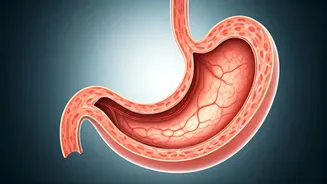Cold Exposure Diet
Recent research points towards a diet that mimics the effects of cold exposure as a potentially powerful fat-burning method. Studies indicate that this
innovative approach could lead to significant weight loss, echoing the body's natural response to chilly temperatures. While specific details of the diet weren't provided in the source material, the implication is that mimicking cold exposure through diet can trigger a metabolic shift that encourages fat reduction. The exact mechanisms, such as whether it relates to diet composition, timing, or other factors, remain a focus of ongoing investigation. However, the initial findings suggest a promising new avenue for individuals seeking effective weight management strategies, indicating the need for further exploration into these techniques. Furthermore, it sparks interest in how other environmental factors could be harnessed to enhance weight management practices.
Plant-Based Diet Benefits
The research highlights the significant advantages of adopting a plant-based dietary approach. Studies show that individuals following such diets often experience improved diet quality, which in turn contributes to noticeable weight loss. By focusing on whole, unprocessed foods like fruits, vegetables, legumes, and whole grains, a plant-based approach naturally limits the intake of highly caloric and processed foods. This dietary change encourages a healthier energy balance, promoting fat loss. Moreover, the enhanced fiber content in plant-based diets aids in satiety, making it easier to control portions and reduce overall caloric intake. The findings underscore that a well-planned plant-based diet could offer a holistic approach to not only shedding pounds but also improving overall health and well-being. This suggests the potential for sustained and healthy weight management.
Intermittent Fasting Analysis
The provided research assesses the efficacy of intermittent fasting (IF) as a weight loss strategy. A key finding reveals that a popular form of IF has failed in a crucial scientific test. This underscores the need for rigorous scientific backing to validate any dieting method. Furthermore, additional data suggests that belly fat may be particularly resistant to IF. The body's fat distribution plays a significant role in how well different weight loss strategies work, meaning the location of fat could affect a person's ability to achieve results from this dietary approach. The initial findings highlight the complexities involved in weight management and the need for personalized approaches. Further studies are required to determine which forms of IF are most effective and for whom, as well as considering other factors that may come into play.
Fasting Rhythm Success
A yearlong study offered interesting insights into different fasting approaches, revealing a 4:3 fasting rhythm outperformed daily dieting. This specific method of intermittent fasting likely involved a specific cycle, potentially including four days of eating and three days of fasting. The research suggests that this approach may provide better outcomes than conventional dietary practices. Details regarding the exact food consumption and physical activity were not provided. The study's results highlight the significance of structured fasting routines. However, the study's conclusions underscore that personalized approaches may be required, and the best method could depend on an individual's biology.
Nutritional Success Guide
The research mentions a clinician's guide to anti-obesity medication diets, suggesting the importance of expert guidance. The guide assists healthcare professionals in integrating medication alongside dietary changes for effective weight management. This approach stresses the need for tailored strategies based on an individual's unique needs. The inclusion of medication indicates that weight management is not a one-size-fits-all solution, but a complex interplay of various approaches. This method's success depends on the doctor's ability to properly monitor patients as they follow a weight loss plan. Integrating various tools and approaches can assist clinicians in helping patients lose weight.













